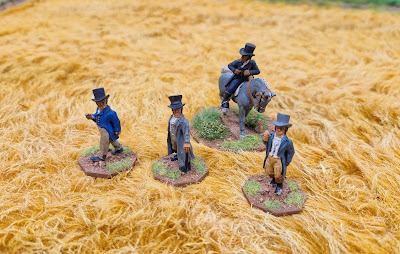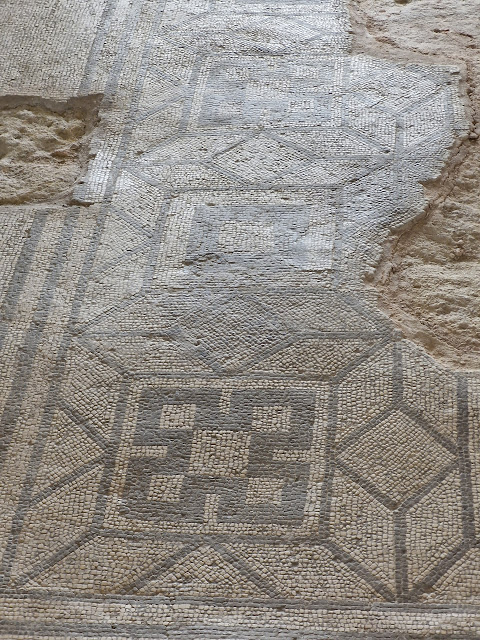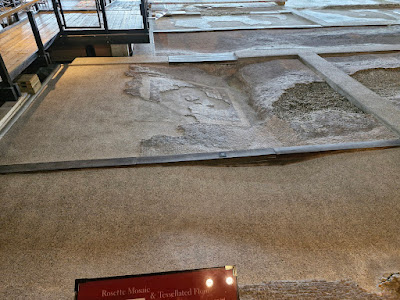Wednesday, 24 July 2024
Haitian Revolution/St Domingue Revolt - Gentlemen of the town.
Monday, 22 July 2024
Miniature Wargames - Broadside 2024
Wednesday, 17 July 2024
The Battle of Bosworth 1485 - A Test of Resolve,6mm batrep
Background
The location of the Battle of Bosworth has been debated and plotted by antiquarians and historians many times in the 539 years since the battle took place. For several hundred years it was linked to Ambion Hill where Richard probably camped the night before the battle. This seems logical because it is one of the highest points in a semi-circular range of hills, with good visibility for miles around. However, few artefacts had been definitively found to tie the battle to this location, and core samples of the surrounding terrain revealed no evidence of the now-famous marsh in which Richard lost his life.
Between August 2005 and August 2009 the Battlefields Trust undertook a major new study of Bosworth battlefield, on behalf of Leicestershire County Council. Combined with new analysis of documentary sources, this analysis shifted the location of the battle away from its traditional site to a position two miles south-west, either side of Fen Lane. A wealth of artefacts were uncovered, including the single largest collection of medieval cannon balls ever found, numerous sword hilts, buckles, spurs, horse tackle and the by-now famous Boar Badge which would have been worn by one of the king's closest entourage. All of these have definitively identified the site of the engagement and indicated the orientation of the battles, the location of the guns and even the infamous marsh. This game is based on this most recent interpretation of the evidence.
Pre-Battle
Richard had a good spy network in France and was well aware of the preparations for invasion. Even the landing point in Milford was advised, but crucially he did not know if this was Milford in Southern England or the Milford in Wales, so he based himself centrally in Nottingham and awaited Henry’s first move.
Henry landed in Wales with just 4500 troops, mostly French mercenaries. Henry’s goal was to collect as much support as quickly as possible to bring Richard to a conclusive battle and thereby take the throne. He marched north up the Welsh coast and then cut inland towards Shrewsbury and England. He was soon joined by Rhys ap Thomas and a body of Welshmen, possibly up to 2000 men strong, but his army was still smaller than the force they expected to support the King. However, Henry had been busy building a potential alliance with William and Thomas Stanley and their considerable retinue and followers. It is possible that Henry was sure of their support before he arrived, but it is also possible that their commitment was still unclear on the eve of battle. The Stanleys marched in parallel to Henry's army, but some miles away, in the days leading up to the battle, and Henry would have had many opportunities to exchange messages. What we now know from the evidence found is that the Stanleys were probably positioned behind Henry’s flank when battle commenced which strongly suggests their allegiance was assured.
While Henry was marching across England, Richard countered by heading South from Nottingham to Leicester accompanied by a substantial army which included many of the leading magnates of the realm. If you believe that the Stanleys were already declared for Henry then the armies were evenly matched, in the range of 12,000-15,000 with the Yorkists having a slight advantage. Then on the 21st August 1485, Richard marched his army out of Leichester taking up a position on the high ground from Ambion Hill to Stoke Golding, overlooking the old Roman road to London.
Richard is said to have had a bad night's sleep, disturbed by bad dreams. Whether this is true, or later Tudor propaganda is still debated. What is now known is that Henry's army approached Fen Lane from the west, and both armies formed up on what was the flattest area of ground available. It wasn’t the best ground for a battle, with hills to the east and fenland and boggy ground around several small streams in its centre, but it was large enough to accommodate the 20-3000 men gathered to decide the fate of the Kingdom.
Big mistake!
Friday, 12 July 2024
A visit to Chichester p2.....Fishbourne Roman Palace
























































































































